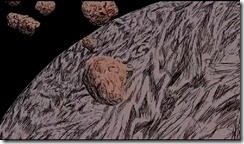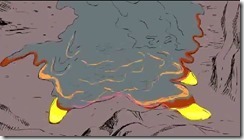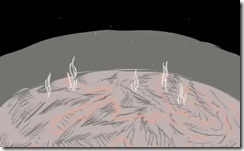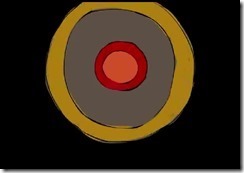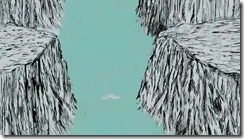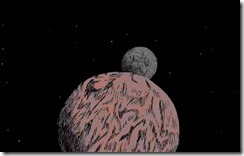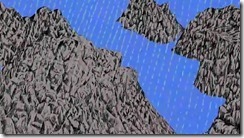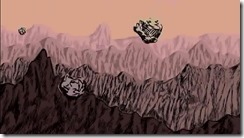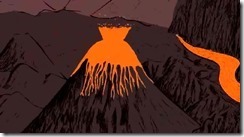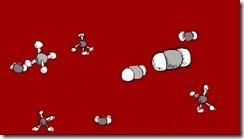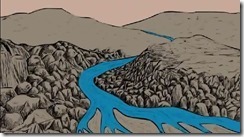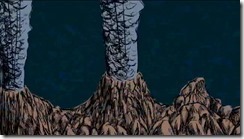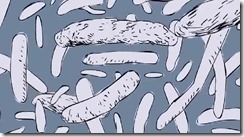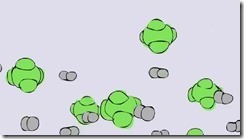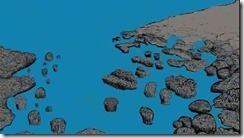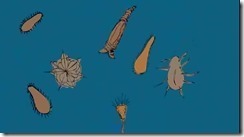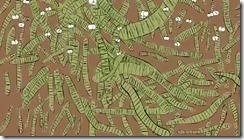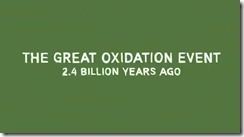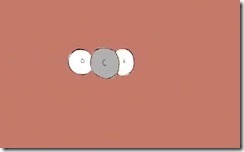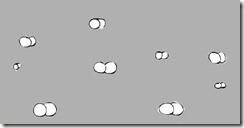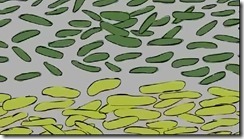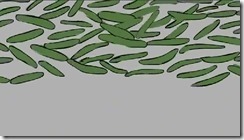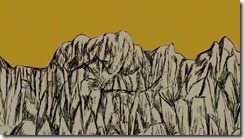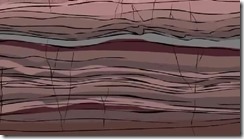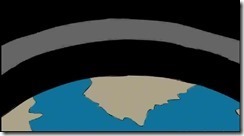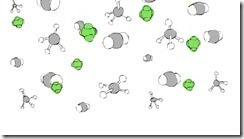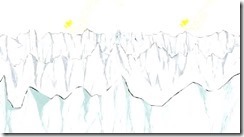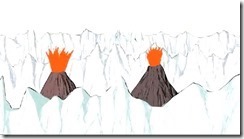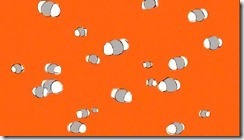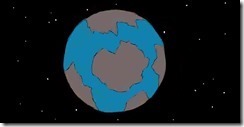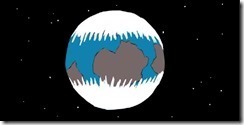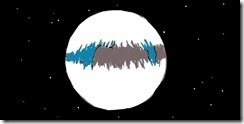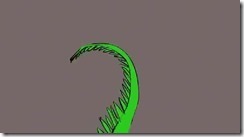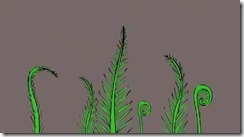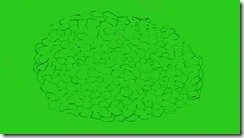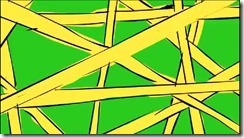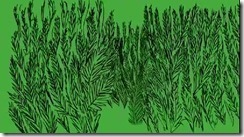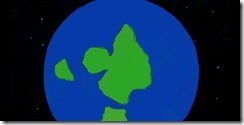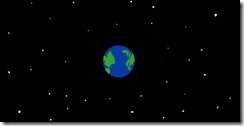Scientists think that the climate on Mars 3.5 billion years ago was similar to that of early Earth.
So, if you don’t know the history of Earth, you will not understand why Mars has lost its atmosphere as it looks like, right now!
“Mars lost its atmosphere, because the iron on mars is only on it’s surface, not in the core of the planet, that causes the loss of its magnetic field, and the solar wind is so strong that it blew the atmosphere away.”;
“Iron could not condense because there was not enough heat to penetrate into the centrosphere of Mars”;
“because Mars is not like earth, which is full of solid iron in the centrosphere, it does not have a magnetic field, so it could not retained the atmosphere, and let the solar winds blow it away.”…..!!!
As what I write on my blog before : “Why is Mars Red?” ; “How did the core of Mars form?”; “Why did Mars’s core cool down.” all these articles are telling you the same thing, in our solar system, all the rocky planets were formed in the same way and what Mr Sui says is wrong!
Let’s have a look, how the atmosphere of the early Earth was formed:
The Early Atmosphere:
The first atmosphere 4.55 billion years ago:
When the Earth first formed, the solar system was a violent place. Giant hunks of rock, metal and ice slammed into the Earth's surface. As material collided and fused, there is intense heat and pressure. Matter vaporized on impact leaving puddles of magma. Many of the collisions released water vapour and other gases, which gradually formed a blanket of steam around the early Earth. This thickened over time becoming the first atmosphere. Some of the lighter gases like hydrogen leaked into space, but the denser steam collected and had a greenhouse effect insulating, heating and melting the surface of the planet.
(Mei : Thus, Mars would also have an atmosphere, during the violent, early period of the forming of our solar system)
The Oceans and the Moon 4.53 to 4.5 billion years ago:
Over time, the Earth, in a process called differentiation, separated into layers and it's crust cooled. Steam in the atmosphere condensed and formed the oceans, covering much of the planet in chemical-rich waters.
The young Earth settled down, but then something about the size of Mars is thought to have slammed into the planet, causing immense changes. The two bodies coalesced and material was blasted outward. Debris from the impact formed a ring of matter that orbited the Earth and eventually became the moon. The surface of the Earth became molten again from the intense heat, and the oceans reformed as a steam atmosphere.
When things finally cooled down again, the Earth's crust hardened and steam settled back down to reform the oceans again. The moon stabilized the Earth's tilt and helped to regulate the climate.
(Mei: We know, from the debris left over from the collision with the other planet, that the moon was formed from earth material because all the material we found in our moon is exactly the same as the material of the earth’s crust! Our moon is round because it is large enough that gravity shaped it spherically, whereas the two moons of Mars have an irregular shape because they are too small that gravity could force them into a spherical shape and we do not know how the Mars moons have formed.)
The Hadean Eon 冥古宙 4.5 to 3.8 billion years ago:
This part of Earth's history is uncertain because there is no surviving sedimentary rock to offer clues about the environment. There may have been several large asteroid or comet impacts, but none as big as the one that formed the moon. Molten rock or magma oozed in some places and blasted out in others. Volcanic activity released heavier gases like carbon dioxide and methane. There was still very little oxygen in the atmosphere.
The Archean Eon 太古宙 3.8 to 2.5 billion years ago:
The oldest sedimentary rocks found in Greenland tell us a lot about the Earth at that time. There were oceans, lands, rivers, and beaches. Deep in the ocean, chemical-rich hydrothermal venting may have contributed to the first forms of life on Earth. These first microbial organisms are thought to have eventually spread throughout the Earth's oceans. Some microbes consumed hydrogen gas and others produced methane as a waste product. Biology began to affect the atmosphere.
By about 3.5 billion years ago, stromatolites mounds made by microbes-- populated the world's beaches. Some early microbes used the sun's energy for photosynthesis, but the first photosynthesizers didn't release oxygen. However, by 2.8 billion years ago, life forms evolved that could use sunlight to split water molecules and release oxygen as a waste product. These were the cyanobacteria that still prosper in today's oceans.
Most of the new oxygen combined with organic carbon to recreate carbon dioxide molecules, and some was used up by other chemical reactions. But eventually, oxygen flooded the atmosphere and touched off a mass of ecological disaster from many of the anaerobic life forms that were poisoned by the abundance of oxygen.
Other life forms adapted to thrive in the new conditions. The rock record offers proof. Oxidized iron compounds are reddish and rust colored. In certain layers of sedimentary rock, they demonstrate the predominance of oxygen after 2.4 billion years ago.
At this time, oxygen formed the ozone layer about 20 to 30 kilometres above the ground, protecting life on the Earth's surface from the sun's harmful ultraviolet rays.
Snowball earths雪球地球 2.4 billion years ago to 2.2 billion years ago :
The rise of oxygen was coupled with the reduction in greenhouse gases like methane and carbon dioxide, so the Earth retained less of the sun's heat, and the global climate became significantly colder. There was mass glaciation and the Earth was encased in ice, often called a snowball Earth. The icy shell reflected sunlight, making it colder and colder, but volcanoes punched through the ice and volcanic carbon dioxide gradually built up in the atmosphere. When the greenhouse effect became strong enough, the planet warmed and the ice melted.
Scientists think that there were three snowball Earth cycles over a period of time from 2.4 to 2.2 billion years ago, and then a period of about one billion years in which the atmosphere and climate were fairly stable.
More recently, the planet experienced other snowball Earth events, but some life forms were able to survive the cold.
The Phanerozoic Eon Begins 542 million years ago:
The current eon, the Phanerozoic, brought a proliferation of plant and animal life. Vascular plants with tissues for conducting water and nutrients colonized the land about 400 million years ago and their photosynthesis caused oxygen levels in the atmosphere to rise.
By about 300 million years ago, extensive forest covered the Earth. They pushed the oxygen levels higher and enabled an even greater diversity of life. Biology, geology, astronomical events and periodic changes in the Earth's position in orbit influenced the climate, but overall, the atmosphere remained stable enough for life to persist.
(Mei: Scientists believe that as the earth’s core is cooling down over time, our planets atmosphere could be similar to that of Mars eventually.)
Next, we will look at hypotheses that could have caused the loss of the heavy atmosphere on Mars. To be continued……
For your information:




